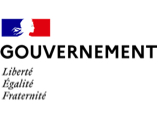National Directory of Supply and Resources (ROR)
The ROR is the Répertoire national de l'Offre et des Ressources en santé et accompagnement médico-social.
Getting started
The ROR (Répertoire national de l'Offre et des Ressources en santé et accompagnement médico-social) centralizes the description of the healthcare offer of health establishments (MCO, SSR, PSY), town structures (private practices, maisons de santé, health centers) as well as establishments and services in charge of the elderly in loss of autonomy and the disabled. It also centralizes the availability of beds and places.
This information is entered by structures or fed automatically by business tools such as bed management tools for bed availability.
The ROR powers the digital services used by healthcare professionals. As a result, professionals can consult the offer directly in their business tools and quickly direct their patients to the professional or structure that best meets their needs. A growing number of digital services are using this data.
Positioned as a unique repository for describing the offer, the ROR evolves with professional practices and patient care modalities. To ensure a high-availability, scalable and sustainable data dissemination service, regional RORs have been feeding a national ROR instance with standardized information describing the offer since February 2023. Digital services can thus access a national view of healthcare provision via a single feed.
RPR challenges and goals
The stakes:
- Reduce the time spent searching for the healthcare offer best suited to the user's needs
- Diminish the risk of disruption in care
- Improve coordination between healthcare and life-course actors
- Optimize the management of health crises, in particular by sharing bed availability
When should you connect to the ROR?
- If your digital service serves one of the following purposes: Orientation, regulation, coordination, piloting, you can follow the consumer publisher path. This pathway will enable you to connect to the National ROR in order to consume healthcare supply data.
- If you are a bed management solution, you must meet the two conditions below:
- Have the purpose of providing bed availability information for one or more facilities;
- Provide the exhaustive list of facilities that provide bed availability information to the ROR National
Successfully connecting to the national ROR
We guide you through the steps to take, the steps to take, the documentation to consult.

Roadmap
The stages of the project:
-
Late 2025 :
The regional RORs are replaced by the national ROR. Data are entered and disseminated directly into/from the national ROR.
Documentation
Frequently asked questions
What's the difference between ROR, FINESS and RPPS?
The ROR presents information identifying structures or liberal professionals and information describing the healthcare offer.
The identification information comes from national repositories, FINESS for structures (n°FINESS, corporate name, category of establishment, address...) and RPPS for healthcare professionals (n°RPPS, practice identity, civil status, profession...). FINESS describes facilities authorized to care for patients. The RPPS describes healthcare professionals who have the necessary qualifications to care for patients. The information in these repositories is recorded by responsible registration authorities.
This identifying information is supplemented by information describing the structure's offering, i.e. the operational activities and the techniques, equipment and resources that contribute to the realization of these activities.
.What healthcare supply data is included in the national ROR?
Healthcare supply is defined as a set of care or services provided by a healthcare structure (a health facility, a medico-social facility, a city structure).
An offer is described with standardized values, called nomenclatures, which have been defined by groups of experts on a national scale and validated by learned societies.
The ROR describes the healthcare offer of all the structure's units. Four main fields are used to describe a unit's offer:
- One or more operational activities or services provided as part of the healthcare pathway (the wording of an activity refers to a set of homogeneous care actions or services). Example: neurosurgery, kidney transplants, psychiatry, specialized follow-up and rehabilitation care;
- The reception capacity for this activity;
- Specific equipment to carry out operational activities (example: positive pressure chamber (sterile room) for a burn unit) ;
- The address where the offer is carried out, contacts and unit resource people to contact if necessary.
For more information, you can view the show model.
Who feeds the ROR data?
The data in the ROR comes from two different sources:
- Some of the data in the ROR comes from national repositories
The data identifying the structures or self-employed healthcare professionals described in the ROR comes from the FINESS and RPPS national repositories. These data are recorded by the responsible registration authorities.
When information is available in a national repository, it should not be re-entered locally, but fed from the national repository. This principle ensures overall consistency across the entire healthcare sector, particularly with regard to structures and professionals. Other data is entered by the establishments and services concerned.
- The health and medico-social structures that provide healthcare services are responsible for entering their services into the ROR
As healthcare services are provided by a structure, it is the structure's manager who is responsible for describing its services in the ROR. A healthcare offer cannot be displayed in the ROR if it has not been validated by the manager of the structure concerned.
What's the difference between public data and restricted ROR data?
There are three levels of accessibility for ROR data:
- Open access concerns data identifying structures as well as general data describing the healthcare offer.
Example: data relating to the activity of a facility's patient base (type of public cared for, minimum and maximum age, opening hours). This data will be accessible to all healthcare professionals, as well as to the general public. The public information portal santé.fr will only display public data on health care provision from the ROR.
- Restricted access concerns data relating to the technical aspects of care provision. They can only be understood by a healthcare professional (and must therefore not be distributed to the general public). Restricted access fields:
- Specific procedures
- Equipment
- Specialized care
- Resource skills
- Capacity
- Very restricted access concerns so-called sensitive data.
Example: data relating to bed capacity in crisis situations. This data is accessible via a specific procedure. Highly restricted data includes:
- Certain contact data
- Put down zone
- Sensitive unit information
What structures can be found in the ROR?
The list of structures whose purpose is to describe their offer in the ROR is as follows:
| Health establishments |
|---|
| 101 Centre Hospitalier Régional (C.H.R.) 106 Centre hospitalier, ex-Local hospital 109 Private health care facility authorized as SSR 114 Army hospital 122 Obstetric, surgical and gynecologicalGynécologiques 127 Hospitalisation à Domicile 128 Etablissement de Soins Chirurgicaux 129 Etablissement de Soins Médicaux 131 Centre de Lutte Contre Cancer 141 Centre de dialyse 146 Structure d'Alternative à la dialyse en centre 156 Centre Médico-Psychologique (C.M.P.) 161 Maison de Santé pour Maladies Mentales 292 Centre Hospitalier Spécialisé lutte Maladies Mentales 355 Centre Hospitalier (C.H.) 362 Etablissement de Soins Longue Durée 365 Etablissement de Soins Pluridisciplinaire 366 Atelier Thérapeutique 412 Appartement Thérapeutique 415 Service Médico-Psychologique Régional (S.M.P.R.) 425 Centre d'Accueil Thérapeutique à temps partiel (C.A.T.T.P.) 430 Centre Postcure Malades Mentaux 444 Centre Crise Accueil Permanent 696 Groupement de coopération sanitaire de moyens 697 Groupement de coopération sanitaire - Etablissement de santé 698 Autre Etablissement Loi Hospitalière |
| Medico-Social Establishments for the Elderly | Medico-Social Establishments for the Disabled | Medico-Social EstablishmentsPôle personnes âgées/personnes handicapées |
|---|---|---|
| 202 Résidences autonomie 207 Centre de Jour pour Personnes Agées 381 Etablissement Expérimental pour Personnes Agées 500 Etablissement d'hébergement for dependent elderly people 501 EHPA receiving health insurance credits 502 EHPA not receiving health insurance credits | 182 Service d'Éducation Spéciale et de Soins à Domicile 183 Institut Médico-Educatif (I.M.E.) 186 Institut Thérapeutique Éducatif et Pédagogique (I.T.E.P.) 188 Etablissement pour Enfants ou Adolescents Polyhandicapés 189 Centre Médico-Psycho-Pédagogique (C.M.P.P.) 190 Centre Action Médico-Sociale Précoce (C.A.M.S.P.) 192 Institut d'éducation motrice 194 Institut pour Déficients Visuels 195 Institut pour Déficients Auditifs 196 Institut d'Education Sensorielle Sourd/Aveugle 221 Bureau d'Aide Psychologique Universitaire (B.A.P.U.) 238 Centre d'Accueil Familial Spécialisé 377 Etablissement Expérimental pour Enfance Handicapée 390 Etablissement d'Accueil Temporaire d'Enfants Handicapés 396 Foyer Hébergement Enfants et Adolescents Handicapés 402 Jardin d'Enfants Spécialisé 198 Centre de Pré Orientation pour Handicapés 246 Etablissement et Service d'Aide par le Travail (E.S.A.T.) 249 Centre Rééducation Professionnelle 252 Foyer Hébergement Adultes Handicapés 253 Foyer d'Accueil Polyvalent pour Adultes Handicapés 255 Maison d'Accueil Spécialisée (M.A.S.) 370 Etablissement Expérimental pour personnes Handicapées 379 Etablissement Expérimental pour Adultes Handicapés 382 Foyer de Vie pour Adultes Handicapés Foyer de vie A.H. 395 Etablissement d'Accueil Temporaire pour Adultes Handicapés 437 Foyer d'Accueil Médicalisé pour Adultes Handicapés (F.A.M.) 445 Service d'accompagnement médico-social adultes Handicapés 446 Service d'Accompagnement à la Vie Sociale (S.A.V.S.) 448 Etab. Acc. Médicalisé en tout ou partie personnes Handicapées 449 Etab. Accueil Non Médicalisé pour personnes Handicapées | 209 Service Polyvalent Aide et Soins A Domicile (S.P.A.S.A.D.)
|
As well as:
178 Centre d'accueil et d'accompagnement à la réduction des risques pour usagers de drogues (CAARUD)
197 Centre de soins d'accompagnement et de prévention en addictologie (CSAPA)
228 Centre planification ou éducation familiale
604 Communauté Professionnelle Territoriale de Santé (CPTS)
606 Dispositif d'appui à la coordination (DAC)
603 Maison de santé (L6223-3)
Do I need to connect to the national ROR?
The ROR presents the healthcare offer on the national territory. The term "healthcare offer" refers to data such as care modes, fields of activity or specific care. The name and address of a facility or healthcare professional are not healthcare supply data, but identification data.
- If your digital service meets one of the following purposes: Orientation, regulation, coordination, piloting, you can follow the consumer publisher pathway. This pathway will enable you to connect to the ROR National in order to consume healthcare supply data.
- If you wish to transmit facility capacity data (availability of beds and places) to the ROR National, you can follow the publisher-supplier pathway. This will enable you to connect to the National ROR.
Our experts on the subject
The ROR: A Major Asset for Innovation in Healthcare
The Répertoire Opérationnel des Ressources (ROR) is much more than just a directory. It is a strategic national tool for anyone wishing to innovate in healthcare, particularly in crucial areas such as vaccination and the management of childhood illnesses.
Why the ROR is Essential for Innovators
The ROR centralizes healthcare provision on a national and regional scale, covering a wide range of services, from health establishments to medico-social structures. For an innovator, this means:
- Precise mapping of needs: Identifying geographic areas or populations where the supply of MMR (Measles, Mumps, Rubella) vaccine is insufficient, or areas where innovative digital services could fill gaps.
- Understanding patient flows: Analyze how patients move between different facilities and services to better target interventions and optimize access to care.
- Identifying potential partners: Discover healthcare professionals, vaccination centers, and other key players with whom to collaborate to deploy your solutions.
Exploiting the Richness of MMR Data
The MMR is not limited to measles, mumps, and rubella vaccination. It offers a wealth of information on the full range of health resources and medico-social support available. This ROR data can be used to:
- Develop applications for monitoring patients with chronic diseases.
- Create platforms for coordinating care between the various players (doctors, nurses, social workers).
- Improve patient referral to the services best suited to their needs.
The ROR and the Espace de Confiance
The ROR is part of an approach to secure exchanges of health information. Healthcare professionals can access it via their Carte de Professionnel de Santé (CPS) or Messagerie Sécurisée de Santé (MSS), guaranteeing data confidentiality.
In short, the ROR is a powerful tool for healthcare innovators. By harnessing its data and understanding how it works, you can develop more effective, better-targeted solutions that are perfectly suited to the needs of the field.







